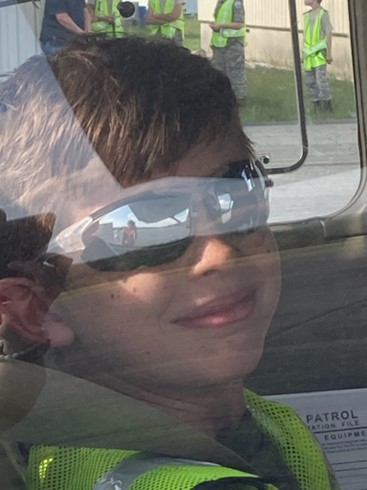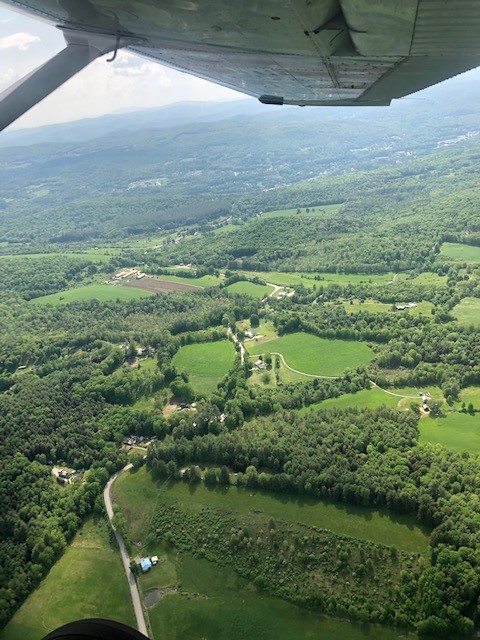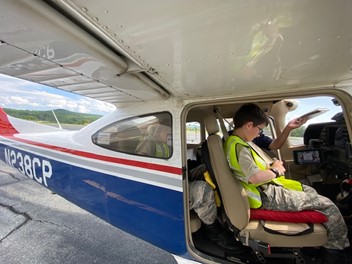Cadets of Springfield’s Catamount Composite Squadron of the Vermont Wing, Civil Air Patrol got an exciting and fun experience with flight on a recent sunny day—actually putting their hands on the controls and (under close supervision of an experienced pilot) steering a Cessna aircraft through local skies.

Cadets participating in the flights included Cadet Staff Sergeant Jean Gagnon (Claremont, NH), Cadet Airman 1st Class Jack Myers (Norwich, VT), Cadet Basic Matthew Wade (Chester, VT), and Cadet Technical Sergeant Penn Linder Jr. (Westminster, VT)
‘Orientation flights are a fundamental element of every cadet’s career in the Civil Air Patrol, and for many their first time in a general aviation aircraft,” said Catamount Composite Squadron Commander Capt Jennifer Gagnon. “A great deal of attention is paid to help ensure these flights are safe, fun, and educational.
The flights sharpen each cadet’s sense of adventure as they get a firsthand, hands-on experience with powered flight that our cadets are unlikely to get anywhere else.”

CAP Mission: Pilot Capt John Compo, a member of the Wing’s Burlington Senior Squadron at Burlington International Airport (KBTV), was the pilot in command for the orientation flights. The cadets flew in the Wing’s fuel-efficient Cessna 182. Sorties were launched and recovered at Hartness State Airport (VSF), here in Springfield.
Cadet orientation flights are combined with the Squadron’s ongoing aerospace education curriculum. which includes both the history and science of flight. Subjects include how wings enable lift and “defeat” gravity; flight stability, and the overall physics of thrust, wing design; and of course, safety in flight and around aircraft on the ground. The wide variety of possible aviation careers is another important topic.
The cadet orientation flight program inspires with the thrill of flying. Civil Air Patrol cadets under age 18 are eligible for five flights in a powered aircraft (usually a single-engine Cessna), five flights in a glider aircraft, and an unlimited number of backseat flights when conditions allow. Orientation flying is always free to cadets.

CAP orientation flights enable participants to experience flight from the front seat of a CAP aircraft. In addition to experiencing flight, cadets received multiple briefings on CAP history, overviews of recent missions, as well as a “pilot’s eye” review of airport operations, charts, radio communications, and aeronautical decision making—all with an emphasis on safety.
According to a recent statement from CAP’s National Headquarters, CAP pilots flew 19,184 orientation flights for CAP, Air Force ROTC and Air Force Junior ROTC cadets in 2020.


